Table of Contents
Unless you can turn in-person or online visitors into consumers, your business will not last long. Sales drive income, which in turn fuels your whole business.
Your marketing’s ultimate aim is lead conversion. Marketing initiatives that generate leads must be able to turn them into business prospects and sales.
Many marketing professionals struggle with lead conversion. For this reason, the problem is exacerbated, since many entrepreneurs are unaware of their lead conversion rate.
Lead conversion and how to quantify it are critical concepts to grasp. Your lead generation operations will have greater value if the leads you generate are converted into sales.
What is Lead Conversion?
The point at which a visitor takes an action that converts them into a lead is referred to as lead conversion. Lead conversion may be defined as the transition of a prospect from one step of the lead generating process to another stage of the lead generation process.
Lead conversion is the process of converting visitors into leads by employing a mix of tactics. When it comes to converting qualified leads into consumers, there are many different techniques to choose from.
On their journey to becoming consumers, leads go through a number of stages. The conversion procedure entails the following steps:
- Visitors will be converted into leads.
- Marketing qualified leads will be generated from leads that have been identified as such (MQLs).
- MQLs will be converted into sales-qualified leads (SQLs).
- SQLs are encouraged to become customers.
Creating chances for the lead to take some action in order to advance to the next stage should be done at each phase. Every firm has its own method for converting leads, but the end aim of lead conversion is the same for all of them: to convert leads into paying customers.
How to Calculate Lead Conversion Rate

It’s not difficult to calculate your lead conversion rate. Simply divide the total number of conversions by the total number of leads, and then multiply the result by one hundred. Your lead conversion rate is the number you’re left with.
This is how lead conversion rate is calculated in practice.
Company A produced 150 leads in May, of which 35 were converted into customers.
(35/150)*100 = 23.3% lead conversion rate
What is the Ideal Conversion Rate?
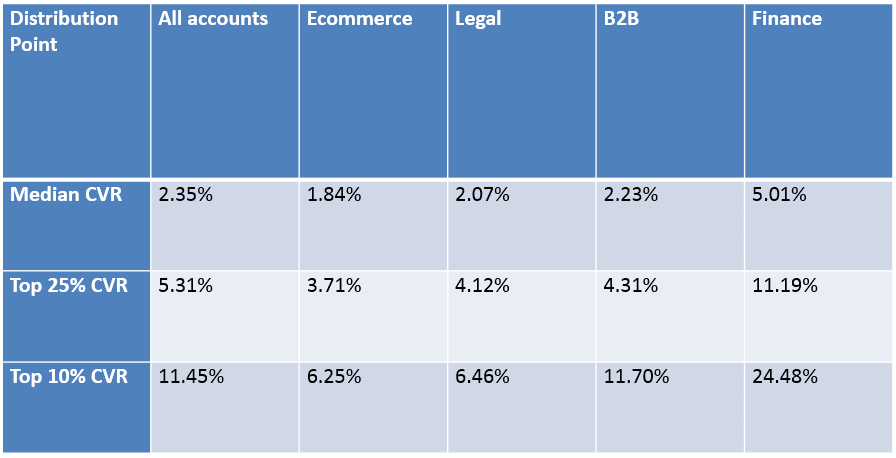
According to Econsultancy, the simple answer is 1-3 percent. Ideal conversion rates depend on a variety of factors, including lead generating methods, lead nurturing techniques, and more.
In addition, different sectors have different conversion rates in mind. For sixteen different industries, Unbounce has estimated the median conversion rate.
Lead Conversion Metrics
Lead conversion metrics allow you to objectively assess the effectiveness of your sales and marketing teams in terms of generating leads, converting them into clients, and doing it in an efficient and effective manner. The lead conversion rate and the lead-to-sale conversion rate are two of the most commonly used metrics.
Lead Conversion Rate
The lead conversion rate is defined as the ratio of the number of leads generated to the total number of visitors to a website or webpage. It assesses your capacity to convert website visitors into leads and determines how effective your website is.
In order to determine the lead conversion rate, you should first calculate the ratio of leads generated during a given time to the total number of visits generated during that period. Use the following formula to calculate your score:
How to calculate:
Total number of new customers / Number of leads*100
Lead-to-Sale Conversion Rate
It evaluates the efficacy of your firm in turning a prospect into a paying client by measuring the rate at which leads are converted into sales. This measure is concerned with the number of leads that are converted into sales and generate income.
In order to determine the lead-to-sale conversion rate, you should first compute the ratio of the number of transformed leads to the total number of leads received in the first place. Use the below formula to calculate your score:
How to calculate:
Converted Leads / Total Lead Volume
Cost per conversion
The cost per conversion is the amount of money it costs to gain a new client. If you want to figure out the cost per conversion, divide the total marketing and advertising costs by the number of conversions.
How to calculate:
The total cost of advertising / Number of conversions
Conversion Return on Investment
The ROI per conversion is referred to as the conversion ROI. To determine conversion return on investment, remove the cost from the lead value and divide the total by the cost of the lead.
How to calculate:
(Lead value – Cost) / Cost
Lead Value
Lead value is the contribution that leads make to the sustainability of your company’s operations. Calculating lead value is as simple as taking the overall sales value and dividing by the total number of lead submissions.
How to calculate:
Total sales value / Total leads
Time to Conversion
The amount of time it takes for a visitor to become a prospect is referred to as the time to conversion. For the purpose of calculating time to conversion, you must divide the entire amount of time spent by site visitors by the total number of leads generated.
How to calculate:
Total time spent by all visitors / Total number of leads
Tips to Increase Lead Conversion Rate
No matter what your current lead conversion rate is, there is always room to improve it. We’ve compiled a list of seven tips to assist you in increasing your conversion rates.
Only Work With High-quality Leads
At the very least, half of the leads or prospects that organizations pursue end up being a terrible match. Limit your audience to individuals who have the greatest likelihood of becoming clients. Take time to get to know your prospects’ job titles, marital statuses, places of residence, earnings, and interests. Take a look at their portrait and see whether it matches your ideal customer’s.
Try using lead scoring to further clarify your judgment. In other words, you’re rewarding your prospects for their level of expertise and involvement with your website and brand. Use lead scoring services and products, such as Leadspace or Velocify Lead Manager, to expedite the process and save time.
Make a Spectacular Offer
Start with making an enticing offer to your lead if you want to turn them into a customer. Personalization is what we mean by appealing. 91% of customers prefer to buy from companies that give highly targeted offers and suggestions.
To make your offer more relevant to your prospects, monitor their online activity on your website to determine their preferences. Follow Birchbox’s lead and make the greatest possible offer. The beauty box service begins by having a prospective customer complete a short survey. It asks about how they look, their preferred cosmetics, and any skin or hair concerns they have. Birchbox customizes its beauty boxes for each individual client based on this data.
Include Testimonials
Eighty-eight percent of customers believe reviews as much as personal recommendations from friends and family when making a purchase. So reviews, testimonials, and other forms of social proof may help you increase your conversion rates on new leads by as much as tenfold. Your landing and product sites, emails, social media, and even PPC advertising may all include testimonials.
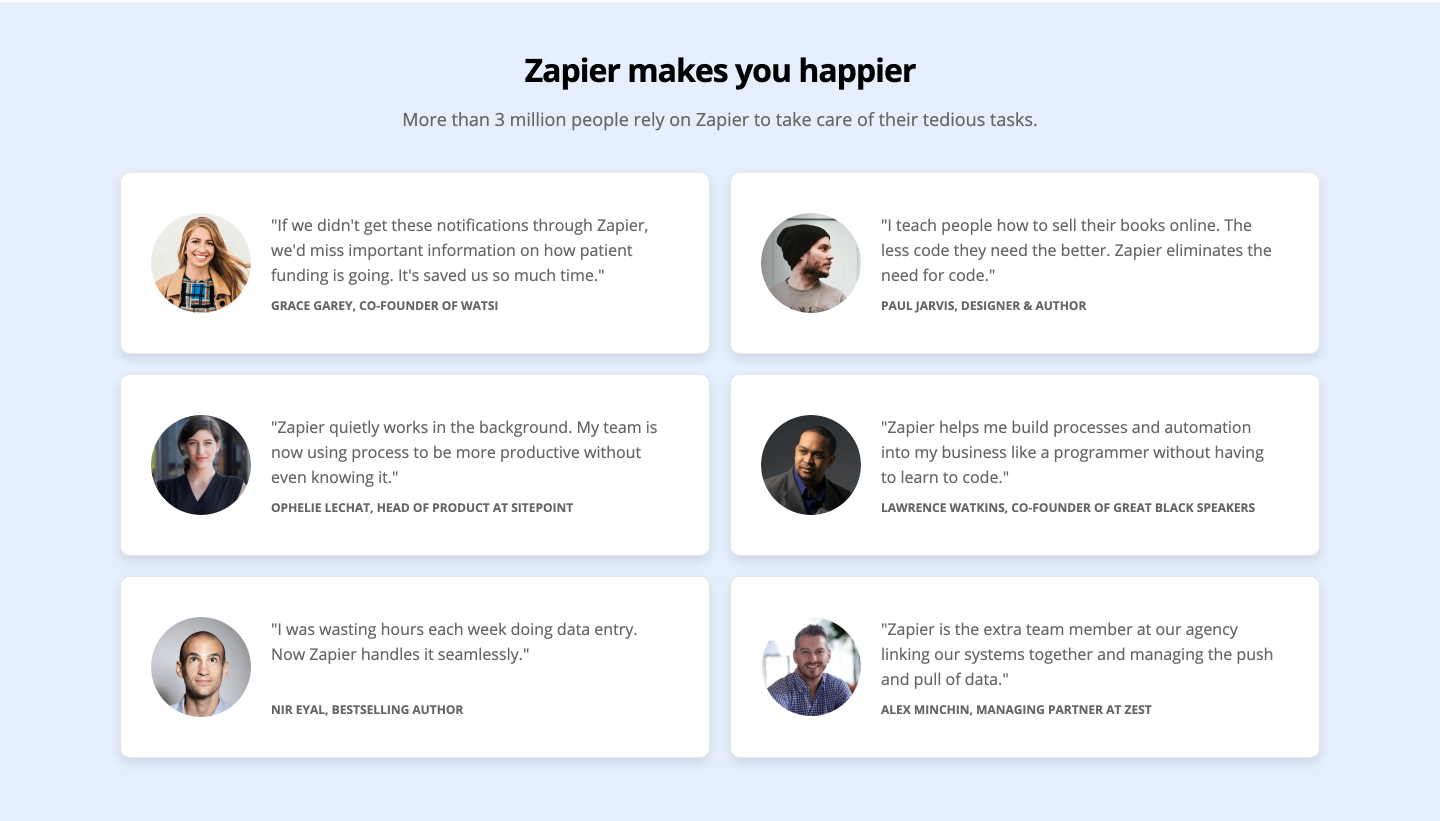
Zapier gives a great example of this by displaying client testimonials on the home page of their website. Examples of Zapier’s software in action and its benefits are provided in the testimonials. Each quote is complemented by a photo of the consumer, which adds weight to the argument.
Use Strong Calls to Action
Providing your customers with an excessive number of options may result in dissatisfied customers. They may not click on a CTA button if they abandon your landing page or email. Clear evidence: webpages with just one call to action have a 3 percent better conversion rate than sites with five or more calls to action.
Revise your text carefully and eliminate numerous calls to action to enhance the conversion rate. Your calls to action must be crystal clear and free of ambiguity. If you’re not sure whether CTA is more effective, execute an A/B test to find out. It may also help increase conversion rates.
The call-to-action (CTA) on Blue Apron’s website is strong. When you receive an email from the cooking service, your sole choice is to click the “Let’s cook” button.
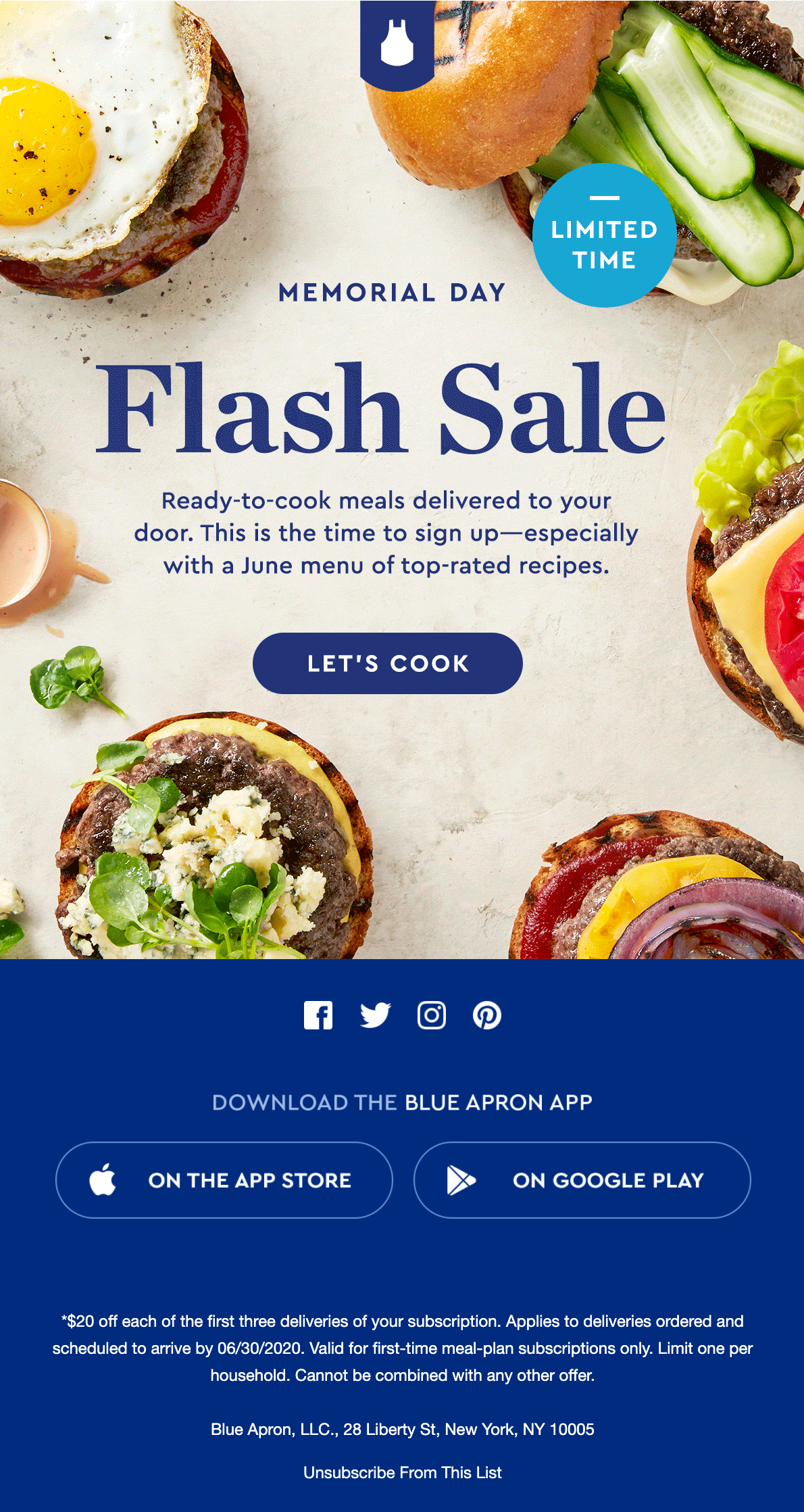
Provide a Guarantee
Your conversion rate will go up as a result of eliminating any uncertainties your lead may have. Increase sales by 21% by including a 30-day money-back guarantee on your website.
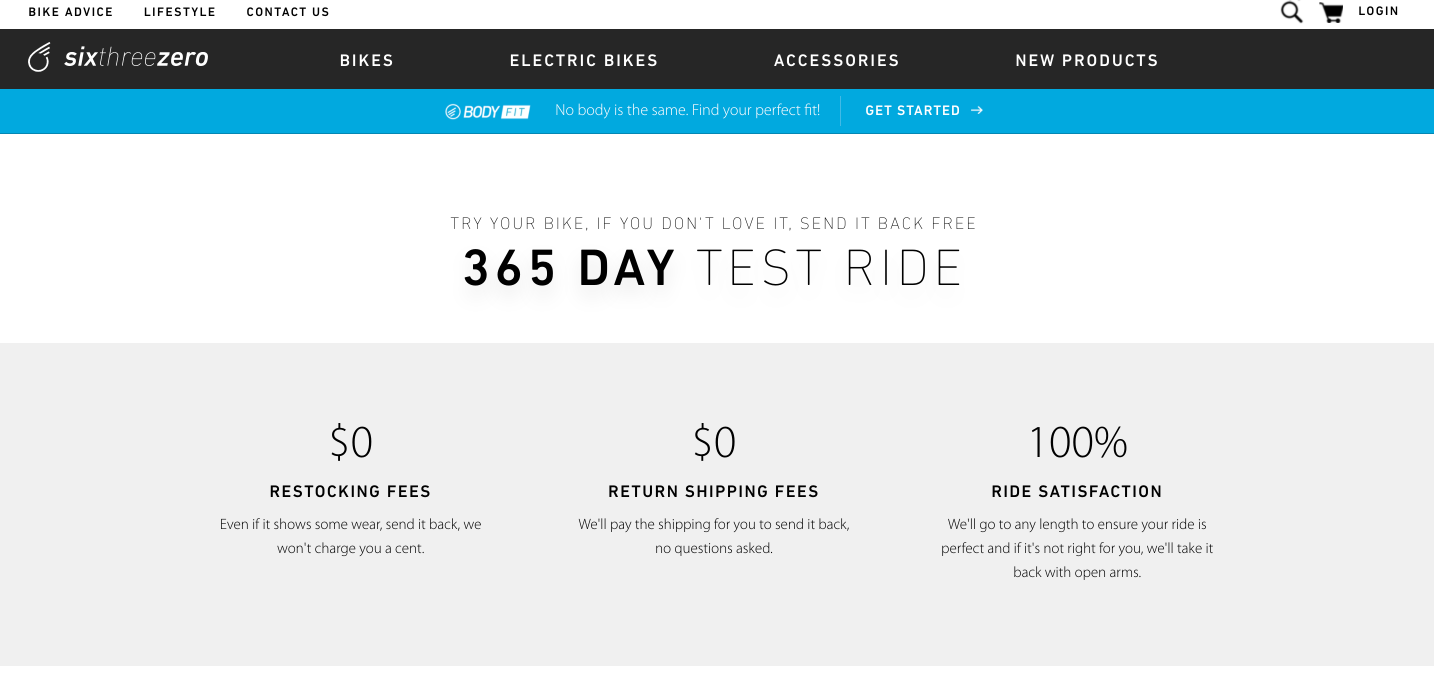
This can cause additional expenditures, customer service congestion, and a jumble of paperwork if you use a money return guarantee. As a result, companies may make ambiguous assurances like “100% satisfaction.” Offer something solid, as Sixthreezero does. Don’t be like them. Customers who don’t like their bike can return it within a year to the manufacturer.
Include a Countdown Clock
Making a product scarce is a simple ploy to entice customers to make a buy. Rare items are highly sought after by humans. Use a countdown timer to emphasize the limited-time aspect of your offer.
Be truthful, otherwise, your leads will discover the fictitious restrictions in your plans and lose faith in them.

Bonobos, a clothing retailer, sent an email to customers with a countdown timer. It’s too bad we didn’t take advantage of this deal sooner.
Add New Prospects to Your CRM Database
Your customers’ orders and information may be stored centrally in a CRM system. A step-by-step sales strategy tailored to each customer’s specific demands may be developed using this information. In other words, you’ll enhance your business relationships as well as close more transactions faster.
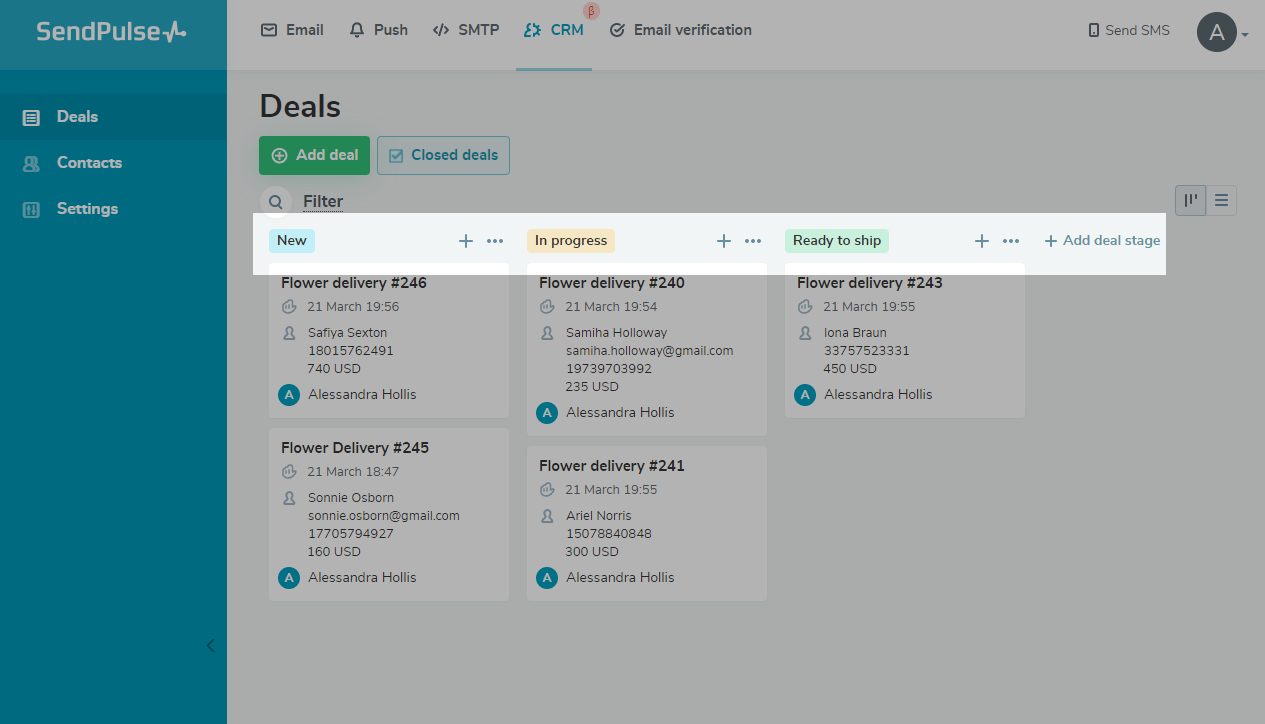
Orders can be accepted, the sales process can be automated, client information can be stored, email campaigns and chatbots can be used to connect with customers and deals can be shared among your team members for free with the SendPulse CRM system. Kanban-boards allow you to see the progress of all of your projects at a glance, with the statuses serving as a helpful reminder.
Automate the Lead Conversion Operation
Most successful firms automate at least 79 percent of their work with prospects. In addition to helping you create more leads, the program also gives statistics to help you assess your efforts and improve your approach.
Try SendPulse for automating your communications. Email, SMS, and online push alerts to segmented contact lists are all possible with our Automation 360 solution. When you turn a prospect into a customer, pause the flow of work and additional criteria for each contact you have with that lead.
Optimize Lead Capture
A visitor must first become a lead before you can turn them into a customer. The lead must be qualified before any information on them can be collected.
Capturing the proper information is critical to boosting lead conversion and capturing more leads. Before converting a visitor to a lead, evaluate what else you’ll need (and how much you’ll need to ask for) from them besides their name and email address.
You may collect visitor information in a variety of methods to help qualify and convert those visitors into leads. Here are a few ideas to get you started:
- A page for collecting contact information from website visitors
- Form for collecting contact information from website visitors
- App to capture emails
- Pop-up ads on a website
- App for booking appointments
Once you’ve decided on a lead capture strategy, you should work on increasing the number of visitors who become leads. In order to enhance your lead-to-sale conversion rate, you must incorporate lead qualifying as a part of your optimization strategy.
The following are a few ideas for improving lead capture:
- Lead acquisition methods may be tailored to fit certain marketing initiatives.
- Assuring that your marketing promise is kept using the lead acquisition technique
- Making the CTA fit the message and delivery method
- Offering something of value to site visitors
Boost the Quality of Your Leads
Leads aren’t better in quantity than in quality, especially in this case. When you have decent-quality leads, your lead-to-sale conversion rate goes up.
Prior to investing time in converting leads, spend more time qualifying them upfront. This necessitates a concerted effort by sales and marketing to identify and qualify prospects.
Establish a clear sales funnel and buyer’s journey structure. The following are some questions for you to answer:
- What’s the difference between MQLs and SQLs, and why is it important?
- In order to become a SQL, a SAL (sales-accepted lead) must meet certain criteria.
- A lead is considered sales-ready if it has demonstrated enough interest and desire to buy.
- Who is in charge of making sure the leads are of high quality?
Having the ability to immediately validate prospects from your lead generation form will lead to more qualified meetings being conducted (QHMs). With improved conversion rates from leads to customers, this saves time spent on prospects that are less likely to convert.
Integrating Chili Piper’s Concierge on your lead capture form, for example, will allow you to qualify leads immediately.
Nurture Your Leads
It takes time and effort to turn a visitor into a client after they become a lead. This entails guiding the lead in the direction you need them to go in as they get older.
When it comes to converting qualified leads into consumers, lead nurturing works wonders. Using tailored content to promote to certain groups of leads helps to engage and guide them toward a purchase decision.
The nurturing process begins once the lead has been collected via your landing page, lead generation form, or another way. It includes the following components:
- Sending follow-up messages after the fact
- Organizing the lead into groups based on their preferences and actions
- When particular activities and reactions are triggered, email marketing messages are sent out.
- Transmitting sales leads when they are ready to make a purchase
Increase your Speed to Lead
Did you know that if you contact a lead within five minutes, your chances of converting them are 21 times higher than if you wait half an hour?
When it comes to turning leads into clients, moving quickly is a great technique. The more quickly you can contact a lead, the higher the conversion rate.
Instantly qualifying leads through your online form is one method to cut down on the time it takes to engage with them. You may include an app for booking appointments with sales representatives so that prospects can reserve a time to talk with a sales representative.
Leads that fill out your lead capture form with Concierge have the option of setting up an appointment or calling a sales representative right away. As a result, the speed at which a leader may reach out and meet is reduced to a bare minimum.
Final Thoughts
It is critical to understand your lead conversion and lead-to-sale conversion rates in order to evaluate the efficacy of your lead management strategy. You may then use lead conversion methods to increase your outcomes, resulting in more visitors becoming customers as a consequence of your efforts.
